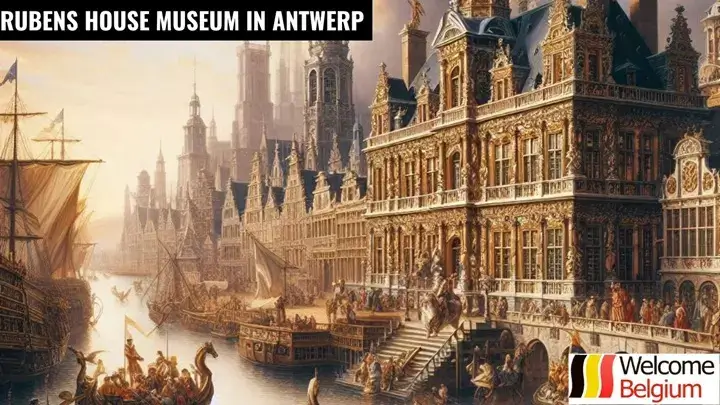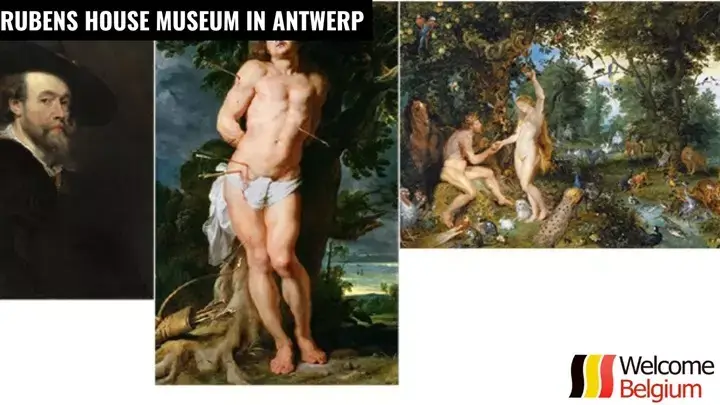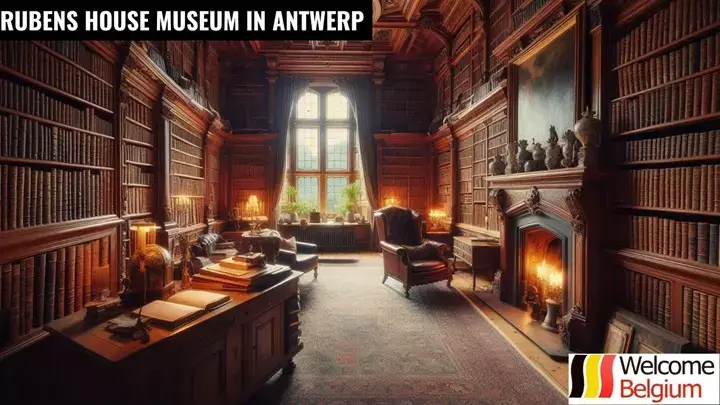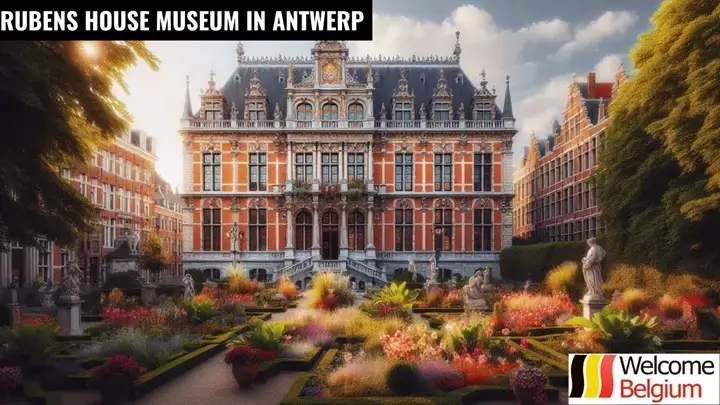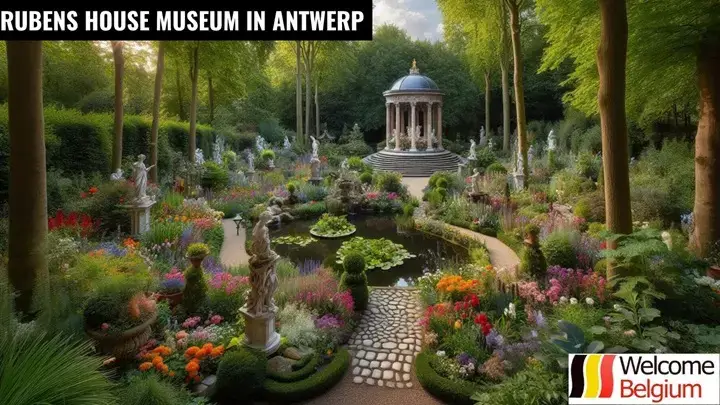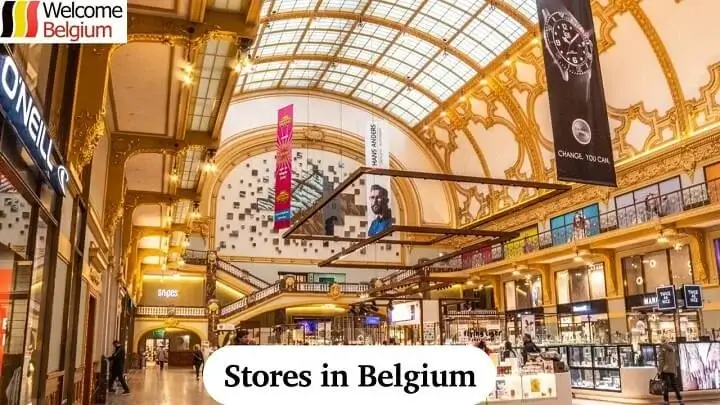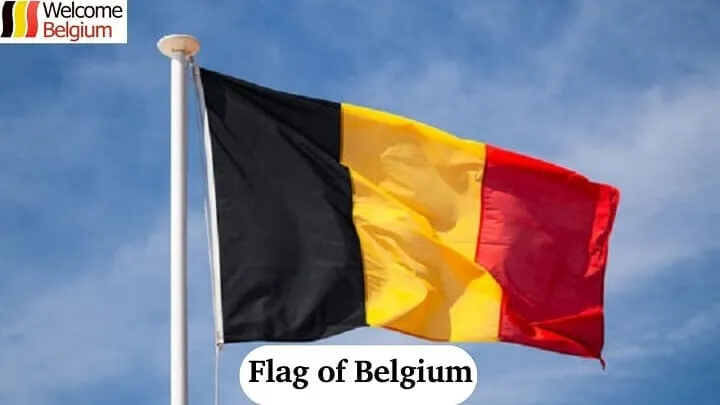The Rubens House Museum in Antwerp is one of the most famous cultural and historical monuments in Belgium, associated with the life and work of the great Flemish artist Peter Paul Rubens. This house, which served as a studio, residence and meeting place, was acquired by the artist in 1610, after his marriage to Isabella Brant .
Situated in the heart of Antwerp, the house has become a true centre of artistic life in Flanders and a symbol of Rubens’s artistic legacy. Its history is closely intertwined with the artist’s biography and the evolution of his style, making the museum a unique place for art lovers.
History of the house
In 1610, Rubens, already an established artist, bought a large house in Antwerp, located on Rue Wapper . The building was originally quite modest, but Rubens made significant changes to its architecture, inspired by the Italian Renaissance villas he had studied during his travels. He added a magnificent portico, courtyard and garden in the style of an Italian palazzo, which gave the building a monumental appearance and reflected his success and ambition. In addition, a spacious workshop was created in the house, where Rubens, together with his students and assistants, created masterpieces that made him famous throughout the world.
After Rubens’ death in 1640, the house remained in his family’s ownership, but over the following centuries it gradually fell into disrepair. By the early 19th century, it had been divided into several parts and its architectural appearance had changed significantly. It was not until 1937 that the Antwerp City Council decided to buy the building and restore it.
In 1946, a major restoration began, the goal of which was to return the house to its original appearance as Rubens envisioned it. Based on historical documents and engravings, the building was reconstructed, and the interior and the artist’s studio were recreated.
The Rubens House Museum officially opened to the public in 1946. Since then, it has become one of Antwerp’s cultural sites and a popular tourist destination. The museum’s collection includes works by Rubens himself, his students, and other Flemish masters of the 17th century.
Overview of the Museum’s Collection
The interior of the house features furniture and art objects from that time, allowing visitors to immerse themselves in the atmosphere of the life and work of the great artist. Today, the Rubens House Museum not only preserves his legacy, but also serves as a venue for exhibitions and cultural events, continuing its mission as a center of artistic life.
Paintings by the artist
The Rubens House Museum in Antwerp houses a number of works by the great Flemish master that showcase his unique style and craftsmanship. Although many of Peter Paul Rubens’ most famous works are in museums around the world, the Rubens House Museum contains several important paintings that reflect his creative evolution and refined artistic taste.
About the most famous paintings by Rubens, kept in the house-museum:
- Self-portrait. One of the central works in the museum’s collection is the Self-Portrait (c. 1630). In this painting, Rubens depicts himself as a mature man with the confidence of a successful artist. The self-portrait shows his attention to detail, his brilliant technique with color and light, and his subtle psychology in the depiction of his face.
- Saint Sebastian. One of the important religious paintings in the collection is Saint Sebastian, which depicts the martyr being pierced by arrows. Rubens was known for his mastery of the human form, and this work illustrates his deep understanding of anatomy and the dynamism of form. The painting is executed in a dramatic manner, with strong emotions and strong contrasts of light and shadow.
- Adam and Eve in Paradise. This painting reflects Rubens’ mastery of biblical and mythological themes. “Adam and Eve in Paradise” is not only a religious story, but also a profound study of human nature. In this work, Rubens uses his knowledge of classical art and the Italian masters he studied in his youth.
- Madonna and Child with Saint George. This painting is one of the examples of religious compositions where Rubens depicted the traditional scene with the Madonna and the child Jesus. However, the addition of Saint George to the composition gives the painting a unique character, which testifies to his interest in various holy figures and their symbolism. The work demonstrates the emotional warmth and richness of colors characteristic of the master’s style.
The House Museum also houses numerous studies and sketches that demonstrate Rubens’s working process. These works provide a better understanding of how the artist created his large-scale canvases, planned the composition and developed the images. The studies, made in oil and charcoal, provide an idea of his technical mastery and creative thinking.
The Rubens House Museum in Antwerp remains an important place to see his work and to experience his life and work. The museum’s collection reflects all aspects of the artist’s talent, from portraits and religious scenes to preparatory sketches that demonstrate his tireless energy and deep commitment to art.
Library
The library at the Rubens House Museum is not just a collection of books, but an important part of the life and work of the great Flemish master. Peter Paul Rubens was not only an artist, but also an educated man of the Renaissance. He was fluent in several languages, studied philosophy, literature, history, which deeply influenced his work. His house in Antwerp served not only as a workshop, but also as a center for intellectual discussions, where scientists, writers and diplomats gathered. The library was one of the key rooms of the house, reflecting Rubens’ wide interests and diverse knowledge.
The library’s collection included books on a wide range of topics, from classical literature to scientific treatises on history, anatomy, and architecture. It reflected the artist’s fascination with the ancient world, Italian culture, and contemporary scientific advances. Many of Rubens’s works include elements directly inspired by his reading. For example, his mythological subjects and religious scenes are rich in allusions to classical texts and images. The books and works in this library helped Rubens maintain the high level of knowledge necessary for his work as an artist and diplomat.
The main topics of the books in Rubens’ library are:
- Ancient literature (works of Homer, Virgil, Ovid).
- Works on history and philosophy (Plato, Aristotle, Tacitus).
- Architecture and art ( Vitruvius , works of Italian Renaissance masters).
- Modern scientific works on anatomy and medicine.
- Religious books and theological treatises.
- Literature in several languages (Latin, Italian, French, Spanish).
These books not only inspired Rubens, but also allowed him to be at the center of the intellectual life of his time. The library also served as an important source of knowledge for his students, who could use it to study the theoretical foundations of art and science. Today, this room has been recreated with great attention to detail so that visitors can experience the atmosphere in which the great master lived and worked. The library remains a symbol of how closely art is linked to intellectual inquiry and education.
Museum architecture
The Rubens House in Antwerp is an outstanding example of 17th-century Flemish architecture that combines elements of Northern European traditions with the influence of the Italian Renaissance. Peter Paul Rubens purchased the house in 1610 and personally oversaw its rebuilding and expansion, inspired by his travels to Italy. The artist turned his house into more than just a living space – it was a real residence and studio, where he created his masterpieces, held meetings with patrons and other artists.
Inspired by the architecture of Italian palazzos, Rubens gave his house an Italian look. He added a spacious courtyard and a portico, typical of the Italian Renaissance architecture. Elements of the classical order – arches, columns, decorative cornices – emphasize the influence of Italy on the master’s artistic taste. The house was designed in such a way that it not only reflected the status of the owner, but also served as a functional space for work and receptions. Right in the house there was a large workshop, where not only Rubens himself worked, but also his students and assistants.
Architectural features of the Rubens House Museum:
- The building’s façade is designed in the Flemish Renaissance style, with its characteristic brick walls and stone elements, which gives the house a monumental and solemn appearance.
- An arcaded portico reminiscent of Italian palaces was created to provide a ceremonial entrance to the courtyard. This space symbolized the openness and wealth of the house.
- The courtyard became the central element of the architectural ensemble, creating an atmosphere of peace and privacy, typical of Italian villas.
- The studio was located in such a way that natural light illuminated the work space, which was important for the artist’s work.
- The garden is also designed in the Italian style, with a symmetrical layout and landscape design elements, which allowed for the creation of a harmonious and calm environment for reflection and inspiration.
Rubens’s house had a significant influence on architectural trends in Antwerp and Flanders. Its design became a model for many other buildings of the time. Combining traditional Flemish style elements with Italian influences, Rubens created a unique architectural masterpiece that embodied his aesthetic ideals. Today, the house remains a testament to Rubens’s skill not only as an artist, but also as an architect. After restorations in the 20th century, the building was restored to its original state, and its architectural features continue to delight visitors.
Rubens’ Garden
The garden of the Rubens House Museum in Antwerp is one of the most tranquil and picturesque places in the artist’s residence, reflecting his love for classical aesthetics and inspiration from Italian culture. Rubens, being not only an outstanding artist but also an intellectual of the Renaissance, sought to create a space that would harmoniously combine nature and art. The garden, like the house, was designed with clear influence from Italian villas, where symmetry, harmony and inspiration from antiquity play a central role. It is not just a place to relax – the garden was part of Rubens’ artistic and intellectual world, a source of ideas and tranquility.
Rubens’ garden was designed to be an extension of the house’s architectural style, creating a sense of seclusion in the middle of a busy city. It includes symmetrical paths, flower beds, and green lawns, typical of Renaissance gardens. It also features sculptures and decorative elements that reference classical mythology, an important theme in Rubens’ work.
Features of the garden in the Rubens House Museum:
- The central part of the garden is designed in a classical style, with straight alleys and a symmetrical composition of flower beds.
- Sculptures and fountains add an element of antiquity and luxury, creating the feeling of an Italian villa.
- The plants were selected so that they would bloom throughout the season, creating a picturesque palette and filling the space with aromas.
For Rubens, the garden was not only a place for relaxation, but also an important element of his creative work. Many of his paintings, including scenes on mythological and biblical subjects, included landscapes where nature played a key role. The garden gave the artist the opportunity to observe changes in light and shadow, the movement of the wind and the play of colors, which inspired him to create more lively and realistic canvases. Moreover, this garden became a kind of symbol of the intellectual quest of the master, who used it to meet with friends, colleagues and patrons, discussing art, philosophy and science.
Today, Rubens’ garden has been carefully restored to the form it had during the artist’s lifetime. Architects and landscape designers have tried to preserve the original elements and restore the atmosphere that inspired the master. Visitors can stroll along the alleys, enjoy the view of the house-museum and immerse themselves in the atmosphere that surrounded the great artist. This garden remains an important element of the entire museum complex, adding an additional emotional and cultural layer to the aesthetic perception of Rubens’ life and work.
Opening hours, directions to the museum
The Rubens House Museum in Antwerp is open to visitors almost every day, providing an opportunity to immerse yourself in the life and work of the great Flemish master.
The museum is open from 10:00 to 17:00 daily, except for some holidays, closed on Mondays. The museum is closed on January 1, May 1, Ascension Day, November 1 (All Saints’ Day) and December 25. On other days, including holidays, the museum is open at its usual time. It is recommended to arrive an hour before closing to fully enjoy the visit, as the ticket office closes 30 minutes before the museum closes.
Ticket prices vary by age category and availability of discounts. The price of admission includes access to the museum’s permanent exhibition, as well as temporary exhibitions.
Entrance fee:
- Adults (26 to 65 years): 12 euros.
- Youth (12-25 years): 8 euros.
- Children under 12 years: Free.
- Preferential categories (pensioners 65+, people with disabilities, groups of 10 people): 10 euros.
- Students: 8 euros (upon presentation of student card).
- Antwerp City Card : Free admission.
Special guided tours for groups and educational programs for schoolchildren and students are also available, the cost of which can be found on the museum’s website.
The Rubens House Museum is conveniently located in the centre of Antwerp, making it easily accessible by various means of transport. Address: Wapper 9-11, 2000 Antwerpen , Belgium.
How to get there:
- By public transport By train: Antwerpen-Centraal station is just a 15-minute walk from the museum. It is one of the largest train stations in Belgium, with trains arriving from all over the country. Tram: Lines 3, 5, 9 and 15 pass close to the museum. Get off at the Meir or Opera stop, both of which are a short walk from the museum. Bus: The museum can be reached by bus lines 22, 180, 181, 182 and 183, getting off at the Meirbrug stop .
- By car. If you plan to arrive by car, you can use the parking lots in the city center. The nearest parking lots are on Meir , Hopland and Eiermarkt streets . The museum is located in a pedestrian zone, so parking is only possible outside this area.
- The museum is also accessible by bicycle – Antwerp has a well-developed network of cycle paths and bike rental stations.
For the convenience of visitors, the Rubens House Museum provides audio guides in several languages, including English, French, German and Dutch. It is recommended to book tickets online in advance, especially during the high tourist season. The museum offers interesting temporary exhibitions that are regularly updated, so it is worth following the schedule on the official website.


